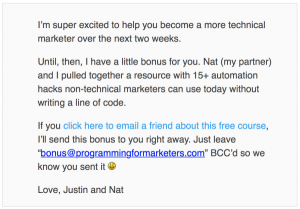A few weeks ago I talked about the increasing trend of hiring agile talent and how companies are benefiting from this strategy. There’s a line that differentiates employing agile talent as compared to temporary contractors but that line is quite thick. In fact, it’s thick enough that the two categories of workers have very specific uses for companies – you cannot replace one with the other. It’s a completely different ideology and approach to your strategic goal when you consider hiring agile talent. Which is why it’s all the more imperative to make agile talent work for you.
So now you have three main categories of workers:
- Full-time permanent workers who are employed on a long-term basis, provided benefits and are directly linked to your company’s strategies and culture.
- Part-time, contractors or temporary workers who you hire for a specified duration to tackle particular tasks, assignments or projects, aren’t provided benefits and who aren’t closely linked to your company’s strategy or culture.
- Agile talent who are employed for a short term assignment or project, aren’t provided benefits, however, have a close linked to your company’s strategy.
A Manager’s Dilemma of Working with Agile Talent
Agile talent is definitely a blend of the two traditional worker categories. Hiring them allows companies flexibility and access to expertise. However, ensuring that agile talent work for you can be challenging, particularly because managers aren’t that committed to temporary or agile talent. They know that an underperforming worker in these two categories can be cut loose easily – their contracts can be terminated or not renewed. With a full-time permanent employee, the situation is different. Managers invest time and effort into their teams. They provide feedback, hold detailed discussions and work hard to motivate their permanent team members.
The level of commitment that managers have towards temporary workers is, in contrast, significantly lower. There are fewer strings attached and less invested in this category of workers. Temporary workers are generally easier to replace because their skill-sets aren’t unique or at expert levels. The tasks they perform aren’t of a strategic nature making them less connected to the company’s culture. Hence, managers put in that much less effort.
Agile talent aren’t like temporary workers. They’re as connected to a company’s strategic vision and culture as full-time and permanent employees. Sure, their services may be required for a short and specific duration, however, the skills they possess aren’t easily replaceable. Hence, there’s a higher need for managers to stay connected with the agile talent that works with them. Feedback, motivation, and constant communication (i.e. everything that takes place with permanent employees) are all essential to make it work.
Make Agile Talent Work
In the book Agile Talent, the authors highlight five areas of alignment that companies and their managers should focus on to create an experience that enhances agile talent’s performance.
1. Strategic Alignment
The first step is to ensure that your agile talent is provided specific and realistic goals, timelines and clearly identified priorities. To really extract the most of hiring an expert you’ll need to be detailed and specific about the outcome that you wish to achieve from their efforts. Remember you’re hiring them for a specific duration making it all the more important for you to make most of their time. Start them off with a clear understanding of expectations and how they should prioritize their deliverables.
2. Performance Alignment
Feedback is the key here. Agile talent’s performance should not only be monitored but it’s immensely important for them to receive feedback on their objectives. And it’s not just evaluating them against agreed-upon performance metrics, it’s providing them feedback on how they’re integrating with the company. That means managers should also be going beyond technical feedback and talking about matters related to interpersonal and cultural activities.
3. Relationship Alignment
Keeping in mind that agile talent are closely linked to a company’s strategic vision, it’s all the more necessary to establish deeper relationships with this category of employees. Company’s need to make an effort to build relationships through enhanced onboarding, regular team meet-ups and activities and engagement communications. Relationship building requires managers to invest time explaining and clearly communicating the company’s culture and values, just as they would for their permanent team members.
4. Managerial Alignment
To truly extract the most from your agile talent, managers need to sync up and synergize with their agile talent. This alignment requires managers to exploit their managerial skills and experience to impart their philosophies and perspectives to the agile talent and motivate them to perform.
5. Administrative Alignment
This alignment requires companies to take necessary steps that would prevent agile talent from feeling alienated or singled out. Basically, you’re making sure policies and procedures, culture, acceptable behavior and all those administrative necessities are communicated to the agile talent. Also, you’re making sure their basic needs (such as getting paid on time) are taken care of.
As a company that’s successfully considering these five alignments, you’ll be able to extract more value from the monetary and time invested in your agile talent. You’ll create an attractive environment where agile talent work their best.
Business & Finance Articles on Business 2 Community(114)
Report Post






